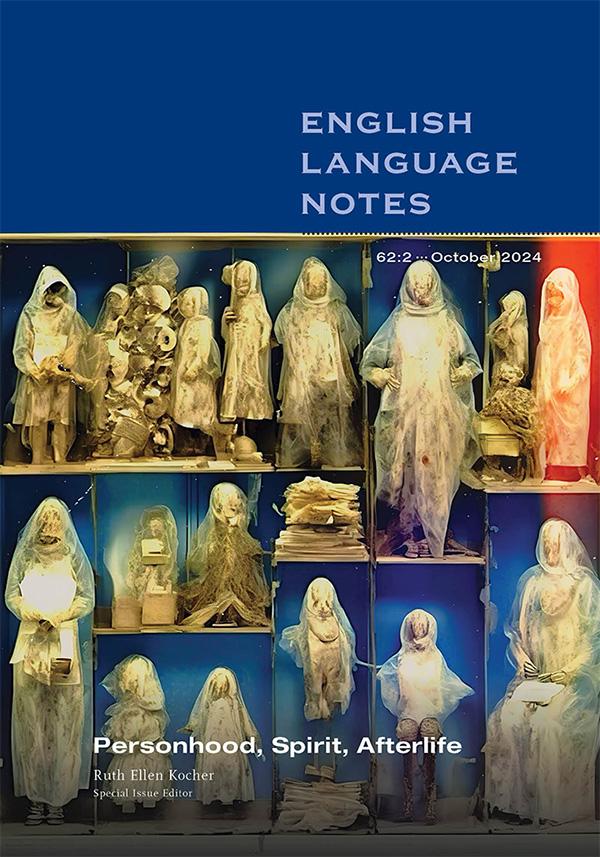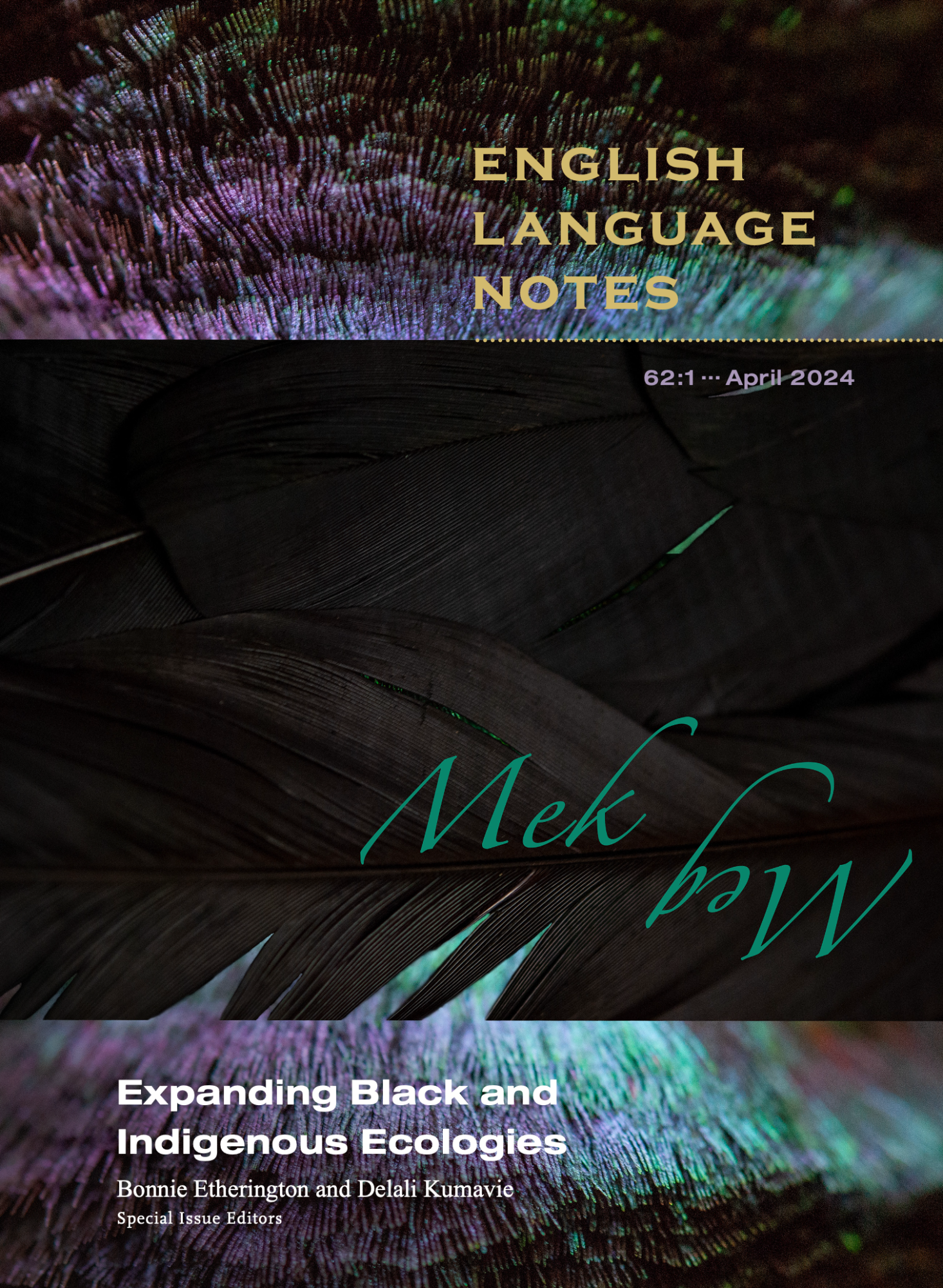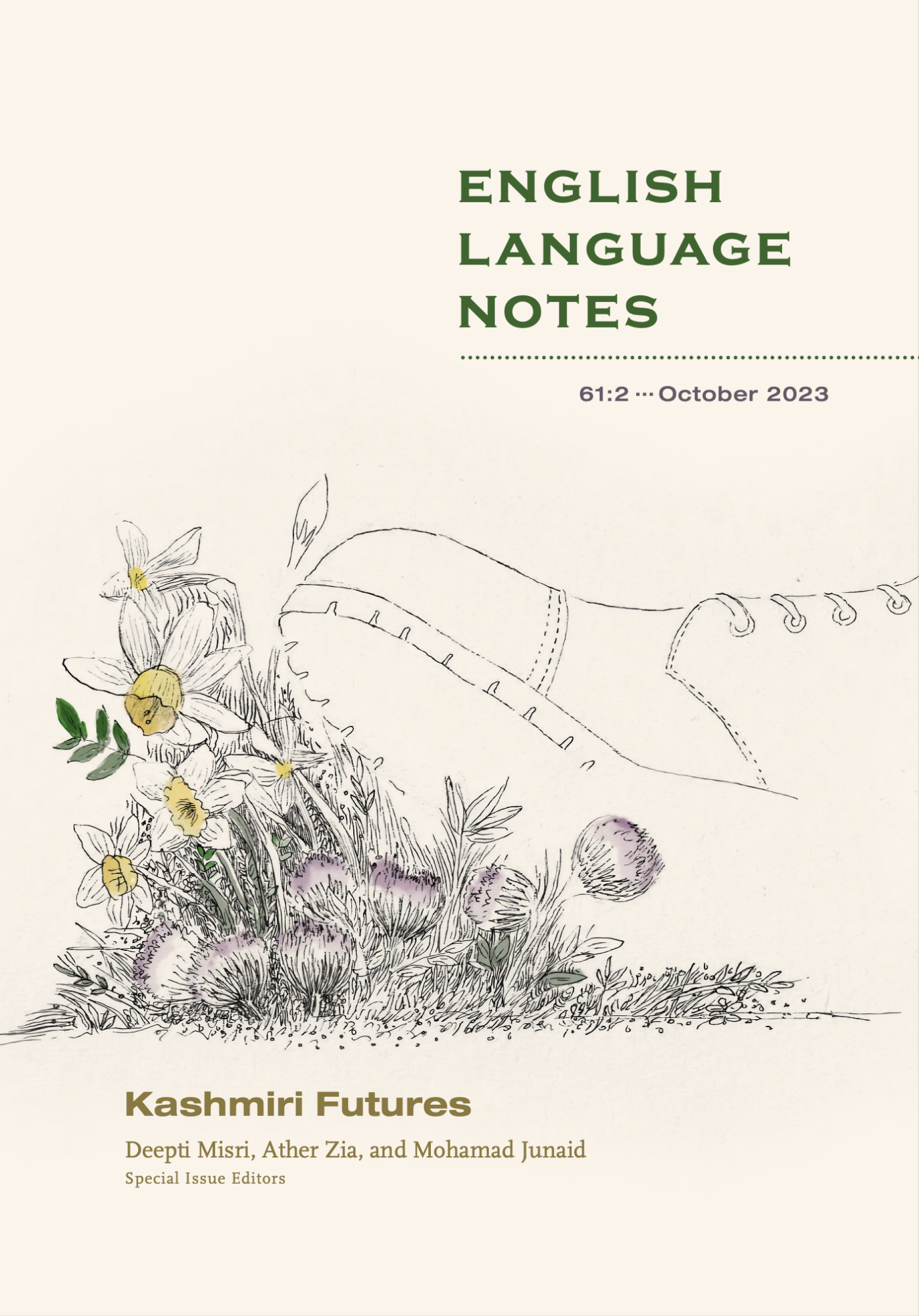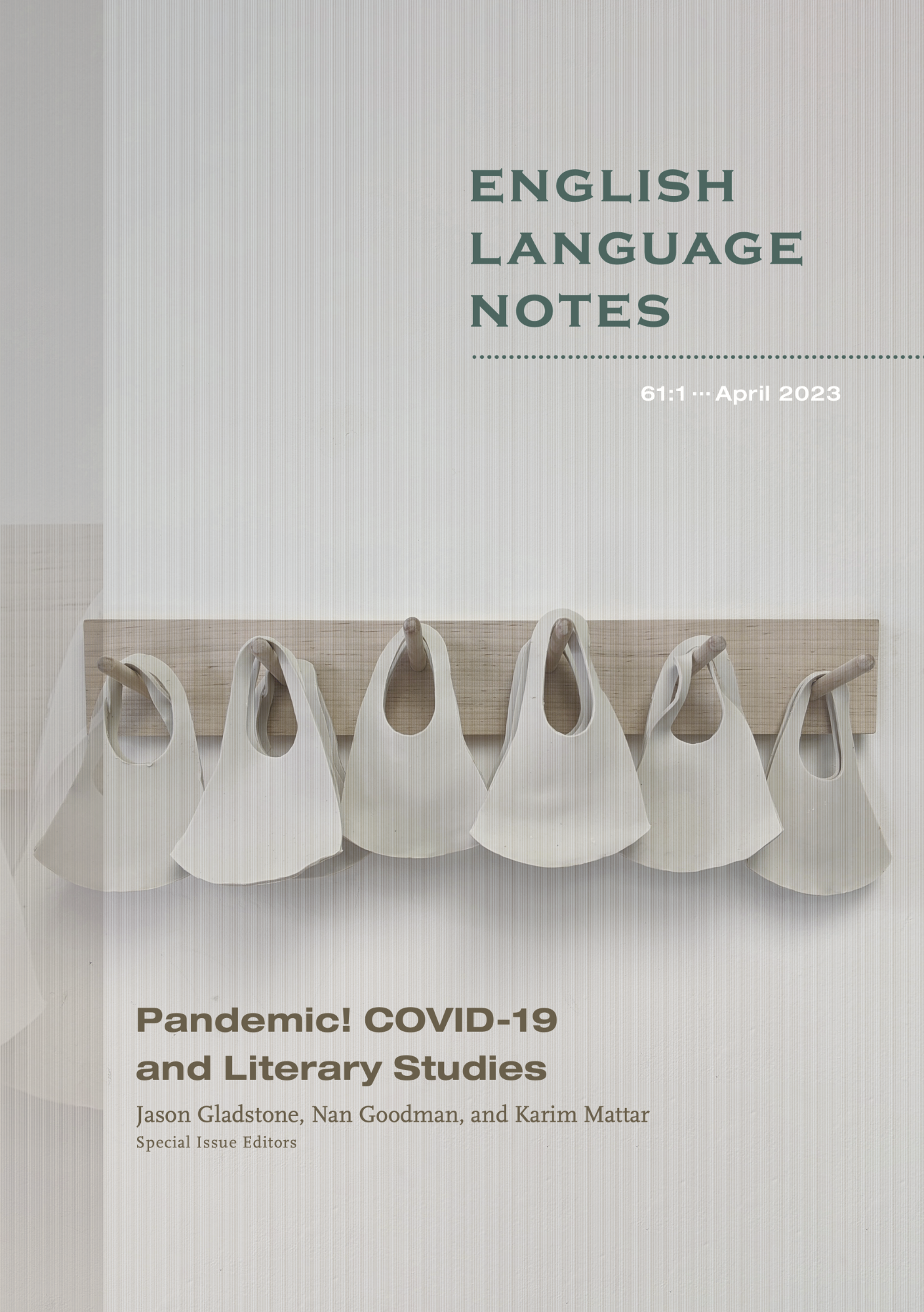Home
ELN is delighted to announce that, as of the publication of our April 2018 issue, the stellar Duke University Press Journals has become the publisher of both print and online factions of our journal. Our digital content is hosted by Duke UP digital journal platform and Project Muse. English Language Notes is available online to approximately 1.5 million readers worldwide. The print version now boasts a dramatic makeover in formatting and cover art, and our publication schedule has changed to an April/October calendar. Our new “Of Note” section showcases exciting new pathways and trends in methods, theories, scholarship, and creative work.
A respected forum of criticism and scholarship in literary and cultural studies since 1962, the recent incarnation of English Language Notes – ELN – is dedicated to pushing the edge of scholarship in literature and related fields in new directions. Broadening its reach geographically and transhistorically, ELN’s semi-annual issues provide a wide-ranging print and digital forum of topical clusters, roundtable debates, artistic collaborations, reviews, and traditional scholarly essays.
We are not accepting unsolicited submissions at this time.
- Refuge & Displacement
63.1, Spring 2025
Ervin Malakaj and Beverly Weber, Special Issue Editors





